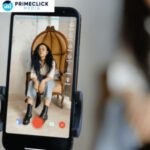Many App developers and marketers have been anxiously waiting for this peak moment- the release of iOS 14.5 and the enforcement of Apple’s App Tracking Transparency (ATT).
There’s been a lot of talk in the digital space about Apple’s iOS 14 update and its impact on Facebook advertising in particular. This roll-out includes a tracking prompt that is set to disrupt Facebook Ads targeting.
As a Facebook advertiser, Facebook has offered a solution to help address the negative impact this update would have on Ads measurement or performance, if you’ve not implemented this solution on your Ad Manager account, you are late already.
However, you don’t need to freak out. Check out this checklist and implement them on your ad campaigns, then you are good to go!
- Update your software development kit (SDKs (MMP, Facebook, Firebase, etc.) to support SkAd Network and Apple search Ads Framework.
-
Set conversion Value Schema.
- Ensure your Paid media and your platforms ( Google, Facebook, etc) adhere to IOS14 guidelines.
- Pull Historical Data from your previous paid media campaigns to ensure you can compare performance post iOS14 to identify changes, manage expectations for future campaigns & update models.
- Consider investing in new tools like Facebook’s Conversion API with information you can control.
- Be ready for an increase in modeled conversions across platforms like Google & Facebook.
- Review your models to ensure the data you use for calculations is still viable after iOS14.5 – If not, discuss ways to change how you value media sources & specific consumers to update your future market strategy.
- Make sure your owned properties align with consumer wants (easy navigation, quick loading, logged-in experiences, etc) to encourage conversion.
- Figure out the right cadence for communication once you acquire a new eCommerce customer to turn them from a “one-time buyer” to a loyalist – As certain elements of our advertising world depreciate, this will be important for your ROI goals,
Most importantly, build a strategy for mobile engagement after the first install or action leveraging marketing tools like email, push notifications, in-app messages, SMS, and/or chatbots.





